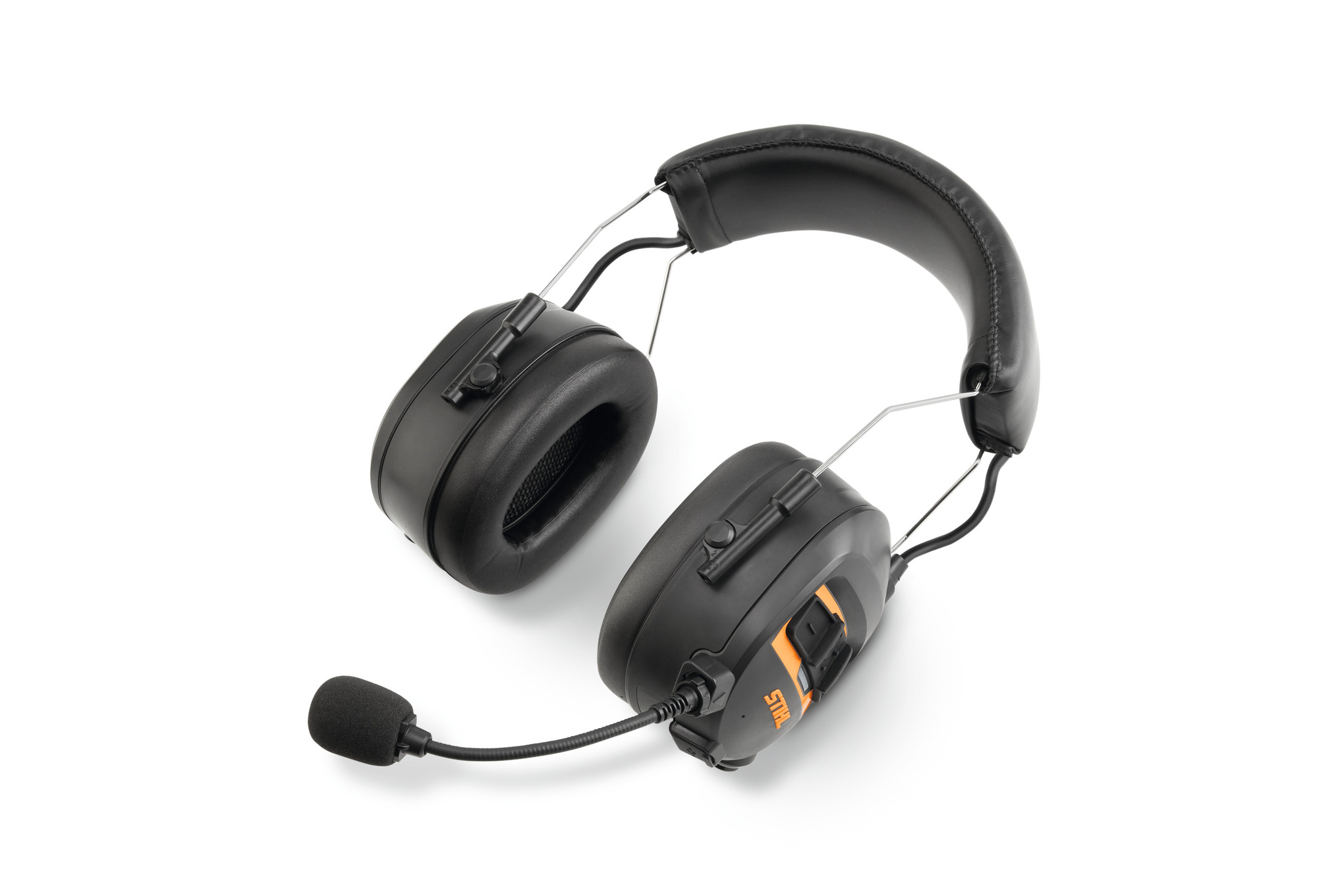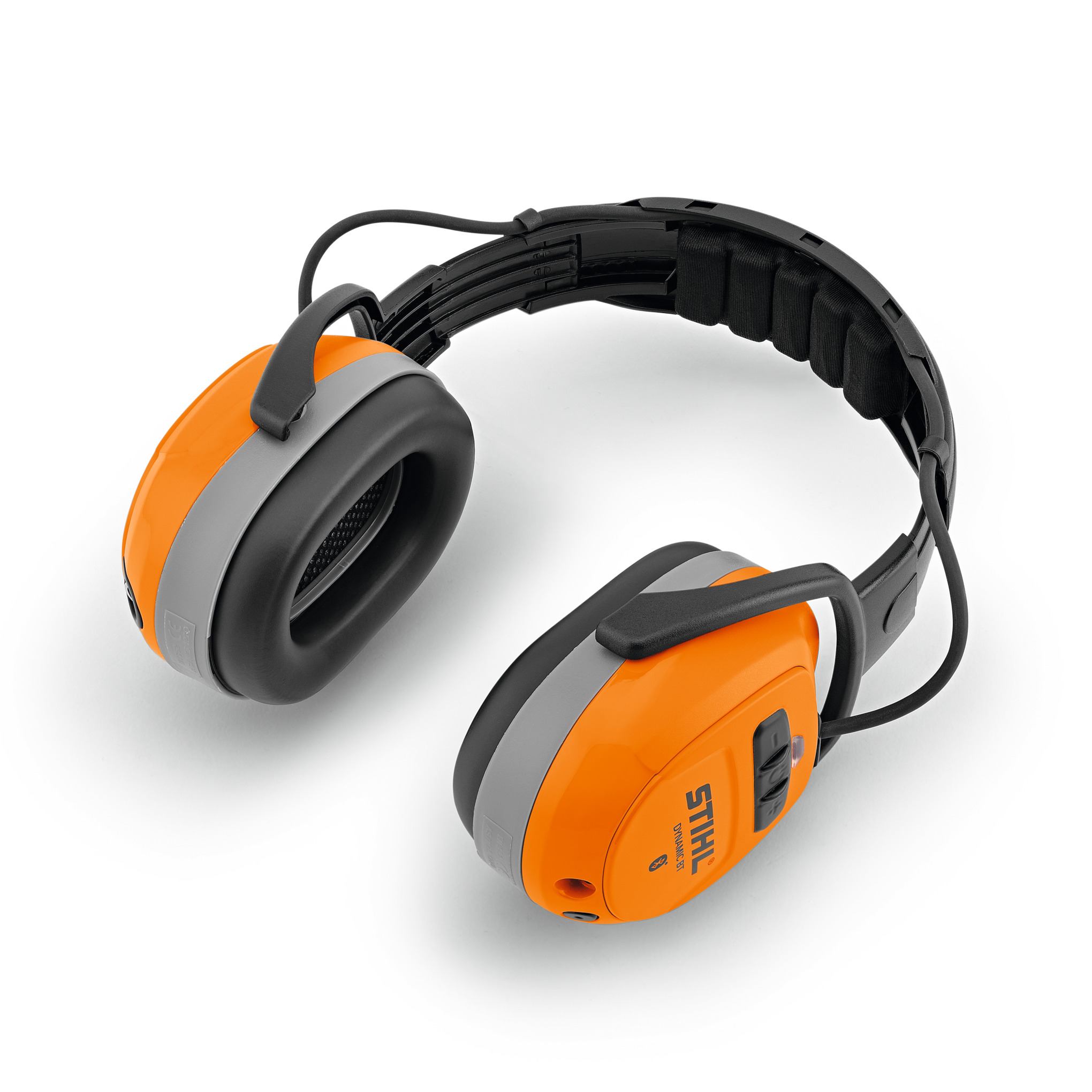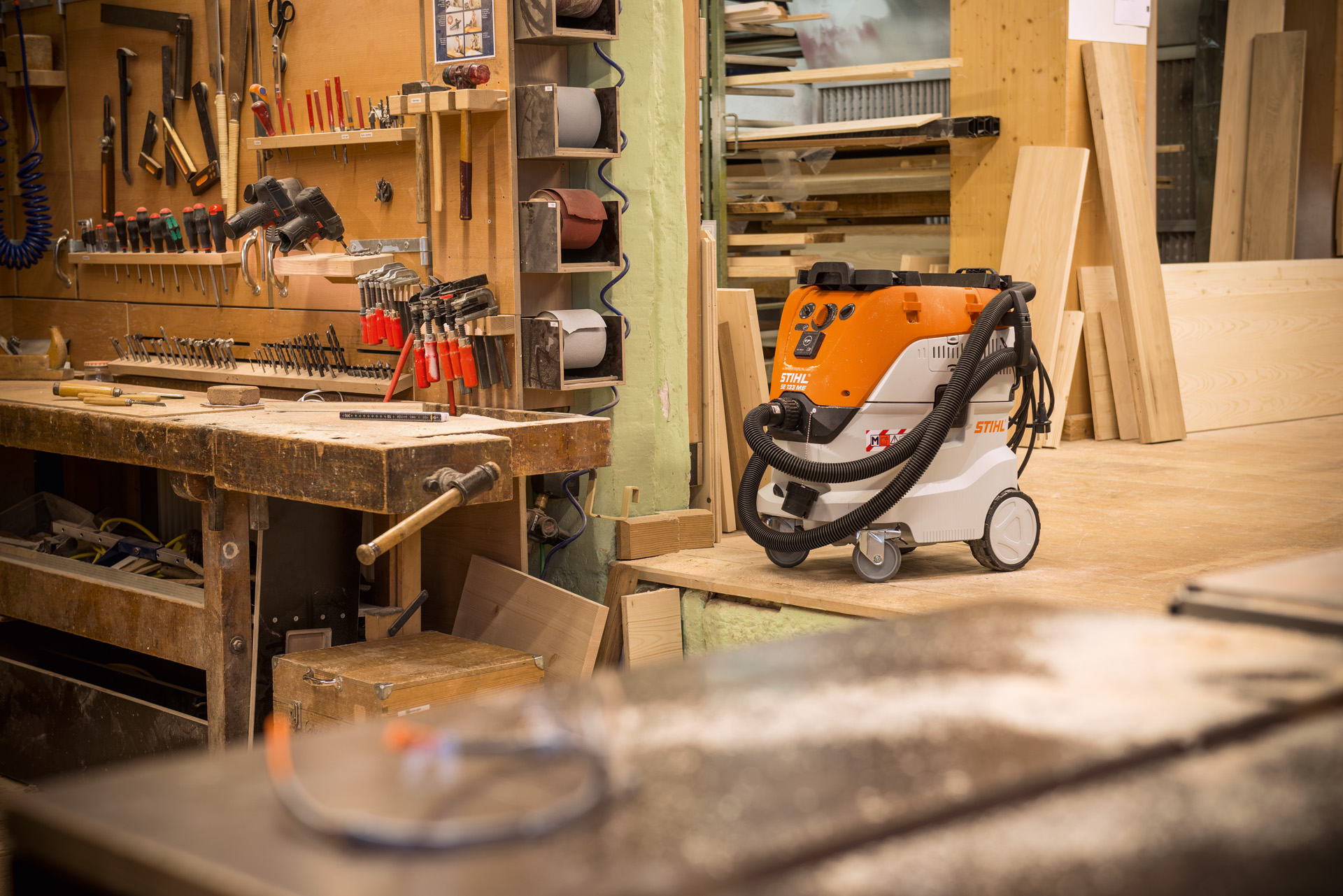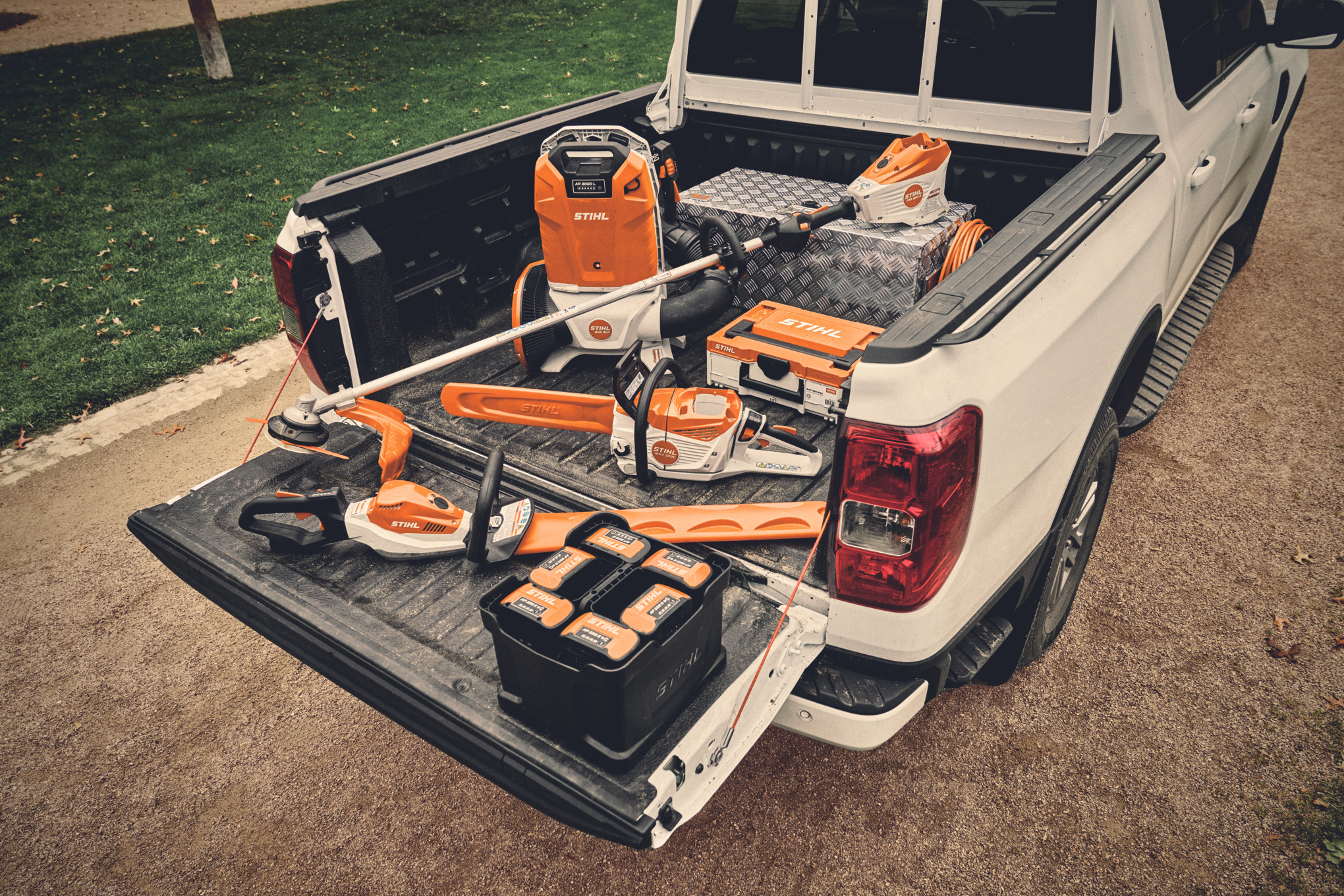Ear protection at work and at home
The right ear protection will protect your ears in loud professional situations and when working at home. We explain what you should consider when selecting and using an ear protection product.
13.11.2024

Why hearing protection is important at work
Whether it’s blowers, chainsaws or hedge trimmers, working with power tools can be loud. Our ears are sensitive and should not be exposed to excessively loud noises. However, those working in the garden or in the forest cannot always avoid noisy conditions.
In order to protect your hearing from excessive and prolonged noise and to prevent subsequent hearing damage in a noisy environment, you should wear ear protection at work – whether in the garden or on construction sites, as well as in industrial businesses and workshops.
But not all noise is the same. In addition to the strength of the sound, the distance from the source of the noise is also important. For example, the question of whether an engine is directly next to the ear while working – as with hedge trimmers, for example – or whether it is more than one metre away, as with lawn mowers, makes a difference. Therefore, it is important to know how much noise the ear is directly exposed to when choosing the right hearing protection.
The operating instructions for our garden and work tools include two values: the sound power level represents the direct volume produced on the device itself, while the sound pressure level specifies the value that actually reaches the user. Both values are expressed in decibels (dB).

What types of ear protection are there?
There are two basic forms: Ear plugs and ear defenders. Important: both types offer identical protection – there are no fundamental differences in noise protection. Both types of hearing protection are now available in various designs for different purposes. They can also be combined with other personal protective equipment (PPE) components such as helmets or visors.
The best type of ear protection – ear plugs or ear defenders – is entirely up to you. In general, you should choose the type of hearing protection you feel most comfortable with.
Safety ear plugs
Ear protection ear plugs are often used in factory and production halls where they must be worn for longer periods. The advantage of ear plugs is that many people find them more comfortable to wear in such an environment because the ears do not sweat and the hearing protection does not have to be removed and put back on multiple times.
Safety ear plugs are usually made of conically shaped PU foam and can be inserted easily into the ear canal. Thanks to their deep seat within the ear, they offer good sound protection. As they are not worn on the outside of the head, safety earplugs are usually more comfortable for spectacle wearers than ear defenders.
Special designs include ear plugs with connecting straps or bands, or earmoulds which are individually adapted to the wearer’s ear canal.
Ear defenders
Ear defenders look like thick headphones. The ear capsules are usually attached to a headband or mounted on a helmet. The sound protection principle is the same as for safety ear plugs. They can simply be folded up or removed during work breaks.
Ear defenders are suitable for all types of work, both indoors and outdoors. They can also be used in all types of weather. In cold temperatures, this form of hearing protection also offers the advantage of keeping the ears warm as you work.
In general, the use of ear defenders is recommended if you have to often put on and take off your ear protection or if you work in dirty environments. Ear defenders are more hygienic to use than ear plugs if you have resin on your hands, for example if working in a forest.

Ear protection with Bluetooth®
Ear protection headphones with radio or Bluetooth® is a further development of the traditional defenders. Models such as our STIHL ear defenders with Bluetooth® (BT) – Dynamic BT allow users to communicate with colleagues via smartphone or the connected radio. This ear protection variant also offers entertainment functions: listening to music via the radio or streaming can increase motivation and counteract a loss of concentration when doing monotonous work.

Combination of ear protection accessories
If you are exposed to extremely loud levels of noise, you can also wear ear plugs and ear defenders at the same time. This allows you to achieve greater noise protection. However, please note that the individual protection values cannot simply be added together. You should only use combinations that are approved by accredited European testing institutes.
Selected ear protection equipment
STIHL offers a range of ear protection products, such as ear defenders or ear plugs, to protect your hearing during work or at home.
hearing protection tips: At what volume should I wear ear protection?
For professional activities, there are concrete specifications as to the noise levels at which employees require workspace hearing protection. Whether in forestry, on a construction site or in municipal areas – ear protection is required when decibel levels reach maximum values as defined in the German Noise and Vibration Occupational Safety Ordinance (LärmVibrationsArbSchuV).
- The ordinance states that volumes below 80 dB are unproblematic.
- The lower exposure limit is 80 dB. Ear protection should be worn if the noise exceeds this threshold.
- The exposure limit is 85 dB. If the noise reaches this level, it is mandatory to wear ear protection.

When should you wear ear protection for private work?

Private work such as garden maintenance or cutting firewood in the forest can also be noisy. Some petrol chainsaws, petrol brushcutters and petrol hedge trimmers can produce noise levels over 100 dB, which is comparable to a rock concert. Electric models can reach levels of 85 to 100 dB, which is roughly as loud as a major road.
It’s worth noting that battery power tools generate the least noise. A battery blower produces around 60 to 80 dB of noise, while battery brushcutters and battery hedge trimmers also produce similar values.

It is therefore not possible to answer the question of whether you should wear hearing protection for private work in the garden or in the forest with a blanket answer. The individual noise level of the tool you are using is crucial. You can find the sound pressure level in the operating instructions for all STIHL power tools – this level will determine whether you need to use ear protection when operating the device. The values are given for typical use and correspond to the actual volume reaching the ear.
STIHL tip: Even though private activities have no regulations similar to the occupational health and safety regulations, the latter provides excellent guidance. This means that wearing ear protection is recommended from as little as 80 dB in order to provide the best possible protection for your hearing.
Guide: how to choose the right ear protection for your work
Check the operating instructions for your STIHL power tool: this specifies the noise level at which the STIHL tool operates.
Evaluate how long you will use the tool for.
Choose the right ear protection from our range. The SNR value can also be found in the product name and provides a rough guide.
For an accurate determination, use the HML value, especially the M value. This value is 20 dB for our STIHL Concept 23 ear protection, for example. This means that the hearing protector dampens medium frequencies by 20 decibels.
When choosing between ear defenders and ear plugs, your personal preference is the most important determining factor, as the protection is equally good for both types. Sometimes handling can also help you decide: if you wear ear protection over a longer period of time, ear plugs are usually more suitable. If you need to put on and take off your ear protection frequently, ear defenders are more likely to be the best choice.
For some types of work, a combination of face and ear protection may be useful. Both types of ear protection can also be used equally well in these cases. For helmets, you also have the option of using a combination with ear capsules mounted directly on the helmet.
If you are still unsure or have any further questions, please contact your local a STIHL dealer for advice.
STIHL tip: Finding the right STIHL ear protection is easy. All models with the suffix “Concept” have a band, on variants with an additional “F”, this band can be folded. Models with “BT” in the name feature Bluetooth® connectivity.
How do I care for and clean my ear protection?
To ensure that your ear protection will protect you in the long term, you should ensure that you treat it correctly.
- Cleaning:
Remove any accumulated dust and liquids after working and make sure that the ear protection can dry out properly.
- Care:
If ear defenders are used frequently, the hygiene sets – consisting of sealing rings and foam pads – should be replaced regularly. Deformations, cracks, fractures or deformed bands are all signs that you need to replace your ear protection.
- Storage:
You should store your ear protection in a clean, dry environment that is not too warm and is protected from direct sunlight.
Summary: choosing the right ear protection
- Many power and garden tools produce high levels of noise that you need to protect your hearing from.
- Suitable ear protection is recommended for professional work, such as work on construction sites or in forests, as well as for private work.
- Ear plugs and ear defenders offer equal protection. The type you choose usually depends on your preferences.
- Use the SNR or HML values to determine which protection value your ear protection should provide. You can find this information in the operating instructions for your device.




